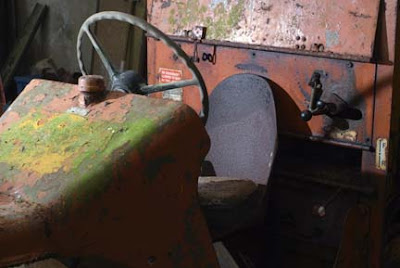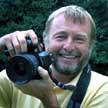The letter that dropped on the doormat was from Mr Percy Broome, FRPS (Fellow of the Royal Photographic Society). I was so keen to open it I nearly ripped the envelope in two.
After my talk with Dad some months before about the need to get to know someone involved with photography, I enrolled for night school classes. Not only would I learn more about photography that way, but night school just might bring me into contact with someone who could help me break into local newspapers. The scale of this commitment can be judged by the fact that the night school classes were held in the same school I went to during the day and that meant retracing my steps to school two evenings a week for six months.
At night school, or evening classes as they are sometimes called these days, I learned about the characteristics of different films and developers; Percy Broome, the tutor, demonstrated darkroom techniques and how to make high quality black and white prints from my negatives, he instilled in me an understanding of shutter speeds and lens apertures - and he didn’t laugh when I told him about my ambitions to become a professional photographer. A former police sergeant, gruff and plain-speaking, Percy had an artist’s eye and he encouraged me to photograph local events. He assured me that if I was good enough I would reach the top. His no-nonsense tuition was so successful that, several months before I left school, I had my first publication in a newspaper, The Manchester Evening News – a picture of a little boy and his pet at a dog show - and I received my very first publication fee – three pounds, thirteen shillings and six pence. Believe me, that was a good price in the early sixties.
Percy also knew the chief photographer on the local weekly newspaper. There was no such thing as ‘work experience’ in those days, but Percy persuaded this chap to let me spend a Saturday with one of the newspaper’s staff photographers while as he went about photographing weddings, bring-and-buy sales and coffee mornings. I got on well with the photographers I went out with, and those Saturday outings with them became a major part of my life. Somehow I managed to get through each week at school - just longing for Saturdays to come round.
Dear Philip,
Present yourself at the Advertiser office at 9 o’clock sharp on Saturday 21st April. Mr. George Greenhough, the chief photographer, is expecting you.
You may be allowed to accompany a photographer on assignments and you might travel by bus – so have some money in your pocket for bus fares. Take your camera with you.
Don’t be late! Keep you mouth firmly closed and your ears and eyes wide open!
Look! Listen and Learn!
Yours,
Percy Broome, FRPS
I knew I was on my way to Fleet Street.






















